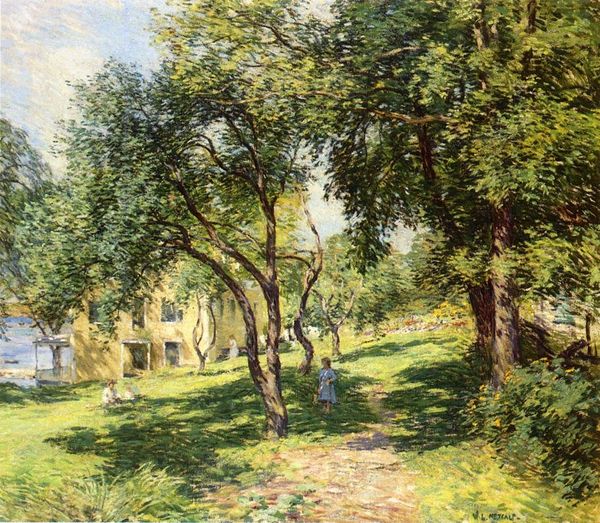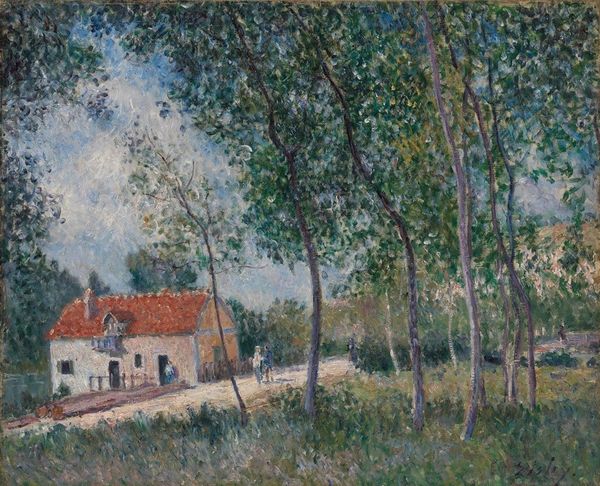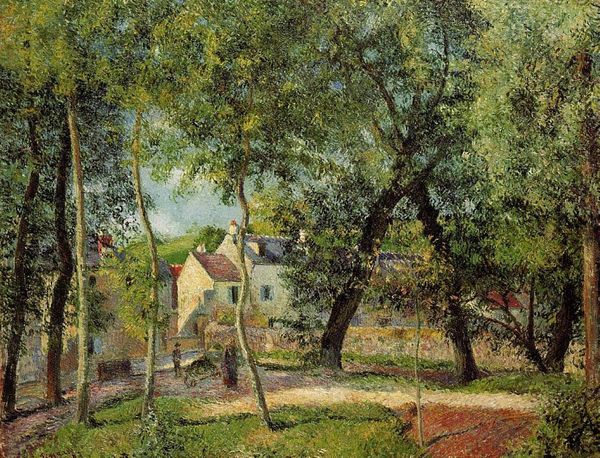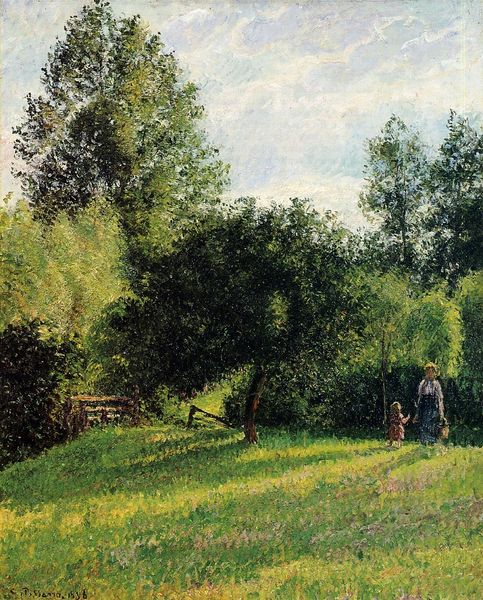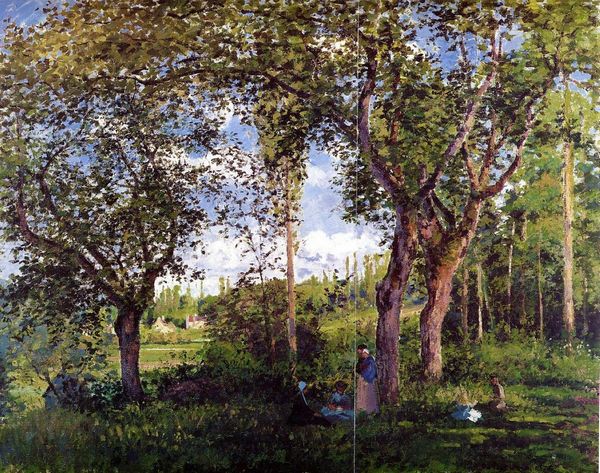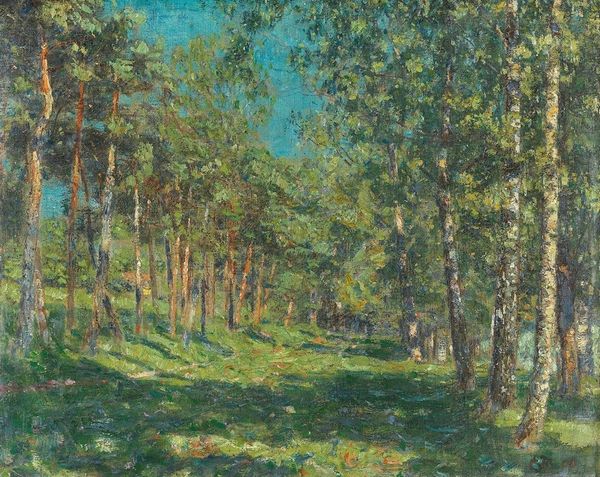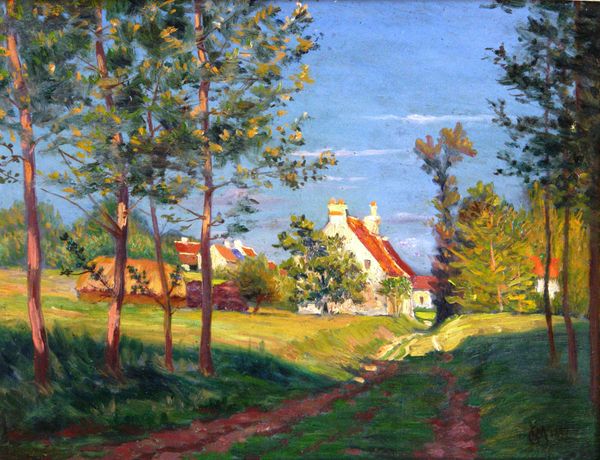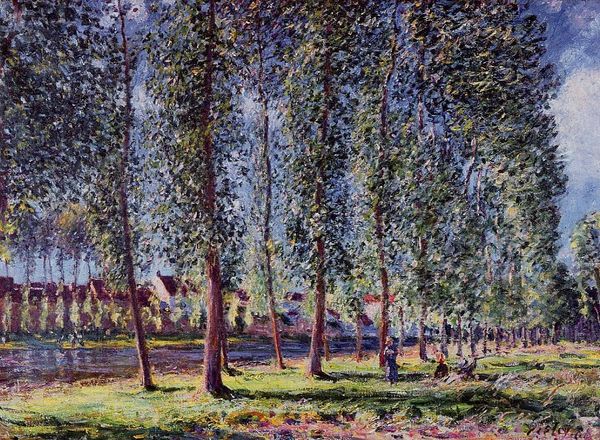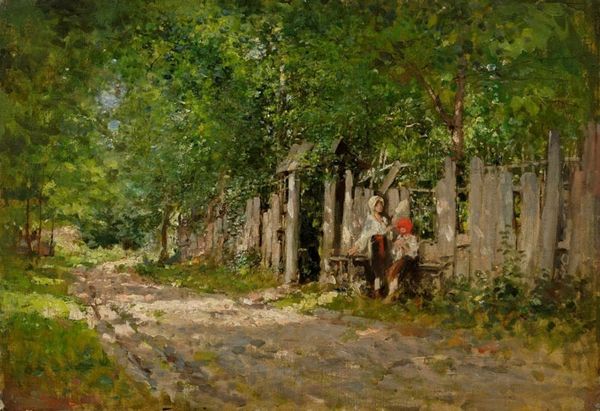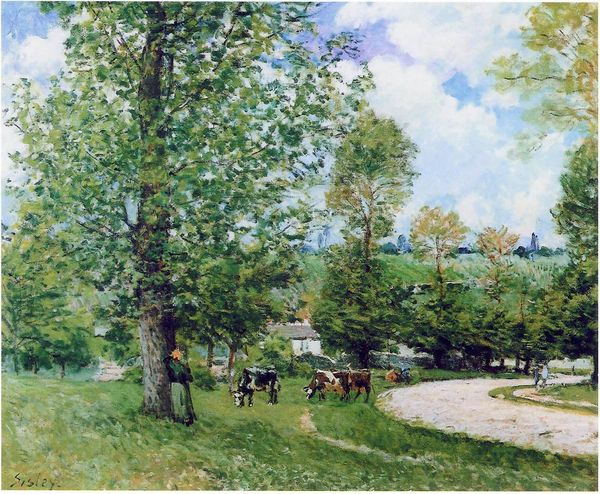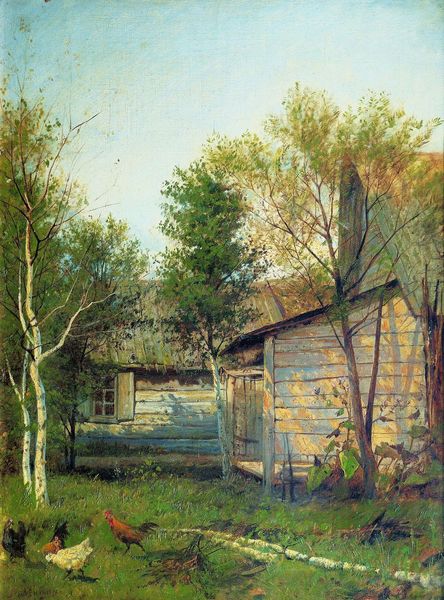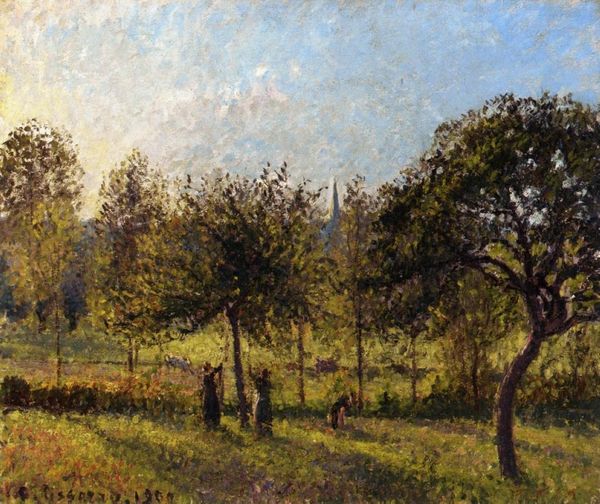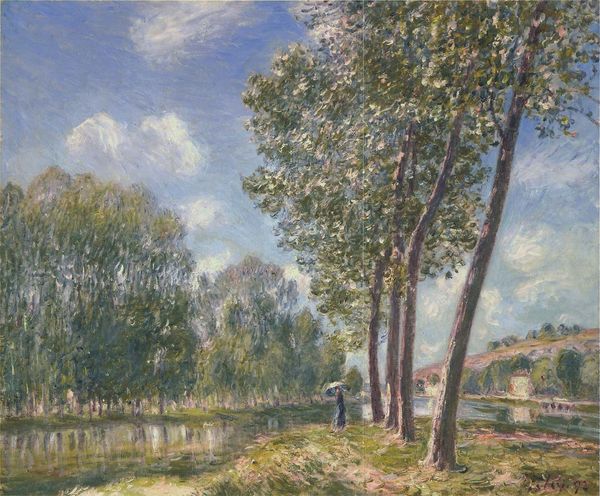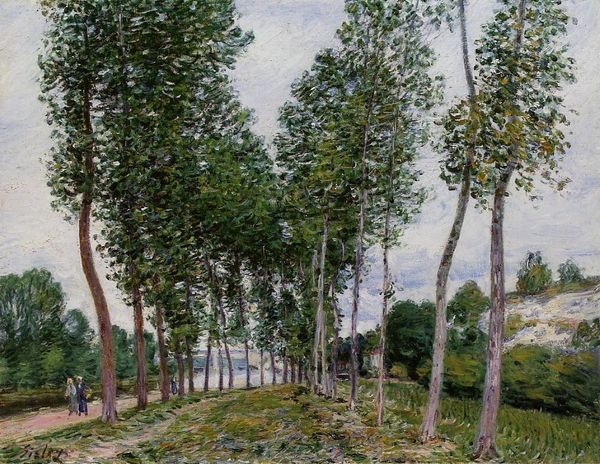
painting, plein-air, oil-paint
#
tree
#
rural-area
#
painting
#
countryside
#
impressionism
#
grass
#
plein-air
#
oil-paint
#
landscape
#
house
#
impressionist landscape
#
nature
#
forest
#
plant
#
natural-landscape
#
greenery
#
cityscape
Dimensions: 50 x 65 cm
Copyright: Public domain
Curator: We are now looking at Camille Pissarro's “The House in the Forest,” painted in 1872. It’s currently held in a private collection. Editor: What strikes me first is its calming effect. The hazy atmosphere and subdued palette really evoke a peaceful, rural scene. There is a tangible stillness to this image. Curator: Yes, and consider the interplay between the structured rows of trees and the more freely rendered grass and foliage. Pissarro’s impressionistic technique, utilizing short, broken brushstrokes, creates a lively surface that shimmers with light. The placement of the house itself anchors the composition, doesn’t it? Editor: Absolutely, but it also makes me consider what this landscape meant to those who inhabited it. Pissarro wasn't simply capturing a pretty scene. There's evidence of labor everywhere—the constructed building, the road. Were there material shortages or other constraints influencing construction? The type of trees planted? How do these material conditions affect the viewer's understanding of idealized "countryside"? Curator: An interesting perspective. Though I'd argue Pissarro primarily concerned himself with optical effects and the translation of sensory experience onto canvas. Think of the subtle gradations of green, the way the light filters through the leaves – a pure study of perception. Editor: But doesn't the choice of subject reflect a societal value? The growing industrialization of France meant depictions of untouched nature took on a new significance as commentary on changing labor practices and increased consumerism. Plein-air became less about 'pure perception' and more a statement about physical and intellectual work happening outside traditional art-making spaces. Curator: Regardless, the composition is ingeniously structured, leading the eye from the foreground path towards the focal point, and then into the background depths. Semiotically speaking, this creates an effect of imbuing the ordinary with the symbolic weight of tradition while pushing towards the modern. Editor: Maybe it’s the layering of all those impressions of pigment that feels meaningful to me, reflecting the complexities inherent to depicting landscapes altered and cultivated by physical work. It brings nuance to an idealized past, even in its seeming simplicity. Curator: Indeed. It’s clear this painting sparks complex dialogues regarding form and context, even now. Editor: Definitely food for thought about landscape's multifaceted nature.
Comments
No comments
Be the first to comment and join the conversation on the ultimate creative platform.
